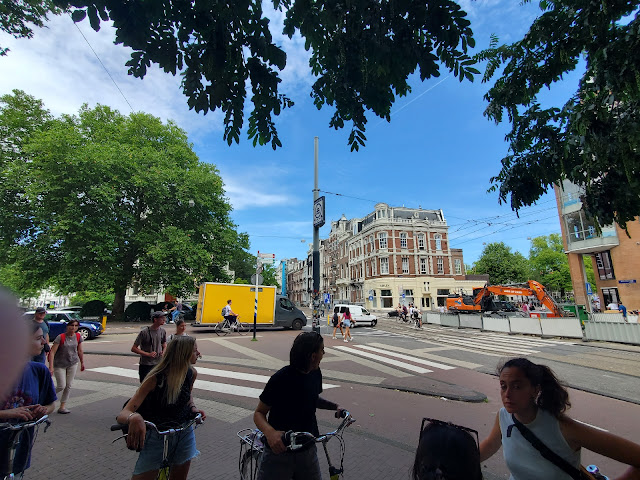Today, our group visited one of Copenhagen’s playgrounds. The site included typical elements of any playground-swings, slides, climbing structures-yet the main attraction of our visit was the traffic playground. The playground design teaches young children how to bike, not only the physical skill of biking but also the traffic culture associated with biking in the city. Not long into our tour of the playground, I could not help but think, “This makes entirely too much sense to me.” The simulated environment allows children to learn how to navigate lanes, turn their bikes at intersections, stop at traffic lights, and know when it is time to go through the intersection, similar to how adolescents in the United States learn to drive a car. However, that the course is so well designed for young children, even toddlers (the instructor mentioned children start learning to ride a balance bike as early as two or three years old) really promotes an early adoption of biking as a transport mode, despite the fact that for the children, the experience feels more like play than instruction. Gamifying biking looked to be a useful strategy to start exposing children to the enjoyment of biking in itself, beyond the practical benefits of using bikes as a transport vehicle.
 |
| The Traffic Playground, Copenhagen, Denmark |
I am struck by the intentionality of Danish citizens to incorporate biking and sustainability into the culture, exposing children early in their lives along with their learning of the language and other behavioral norms of the culture. I reflected on how that intentionality can foster independent children, adolescents, and later adults throughout different life stages. I feel in the United States, there are fewer opportunities to independently learn and explore our own built environments. Some children do learn how to ride a bike, but not as a form of transportation but rather as recreation.
 |
| Playground reflecting Copenhagen's architecture |
 |
| Sign postings for directions in another playground |
 |
Playground attached to a school
|
One of the professionals on our trip made an excellent cultural comparison about how we introduce U.S. youth to swimming at a young age. I remember my own experience when it was time for swim lessons and the hierarchy of skill sets one could attain throughout the training: guppy, tadpole, fish, and I think the advanced level we called shark. The comparison underscores what value we place on the skills we teach our youth. In the U.S., we teach children forms of recreation as a necessary skill but rarely initiate them in other, arguably more tangible skills such as cooking, personal finance, and, in the context of our study abroad course, biking as a form of transport in tandem with the existing transportation structure.
 |
| Bikes lanes incorporated into playground space |
 |
A playground also designated friendly for
children living with disabilities |









Nice example of the importance of exposing kids to cycling early!
ReplyDelete